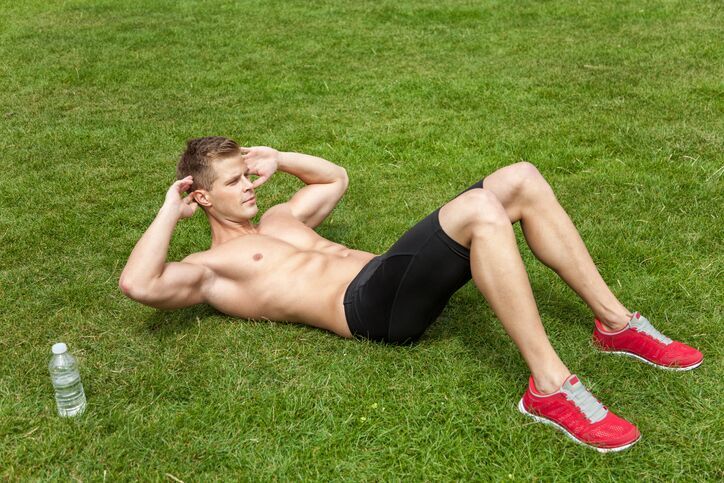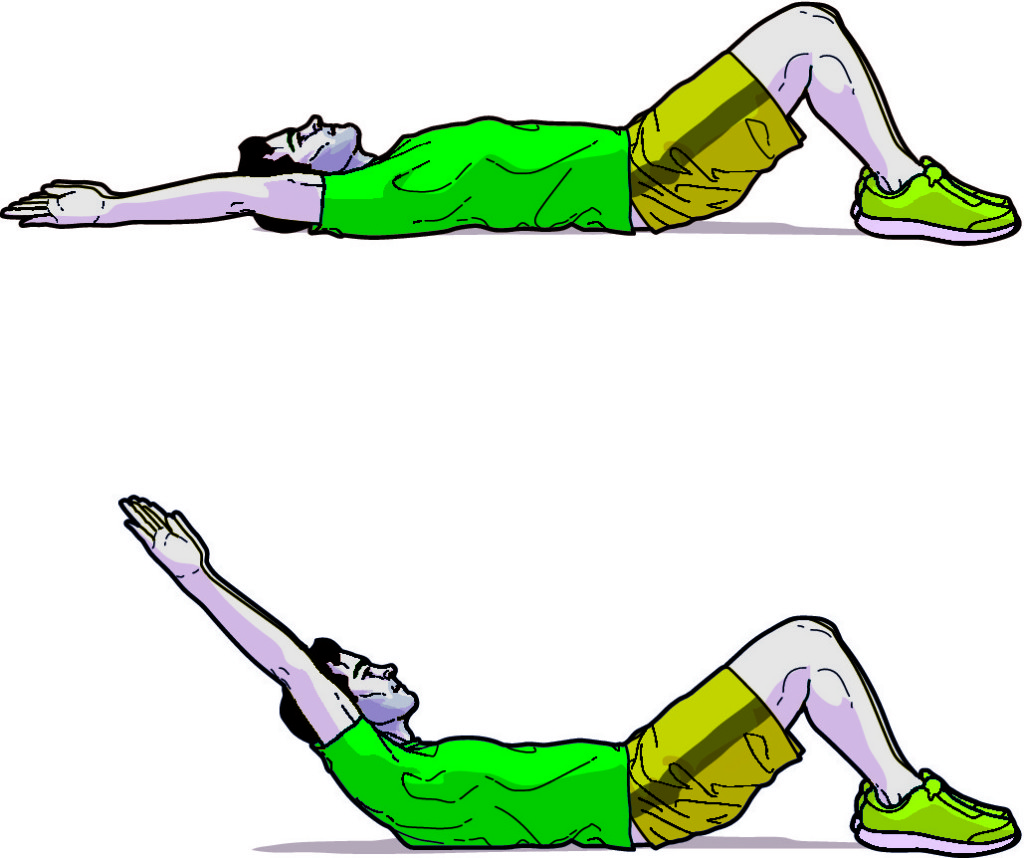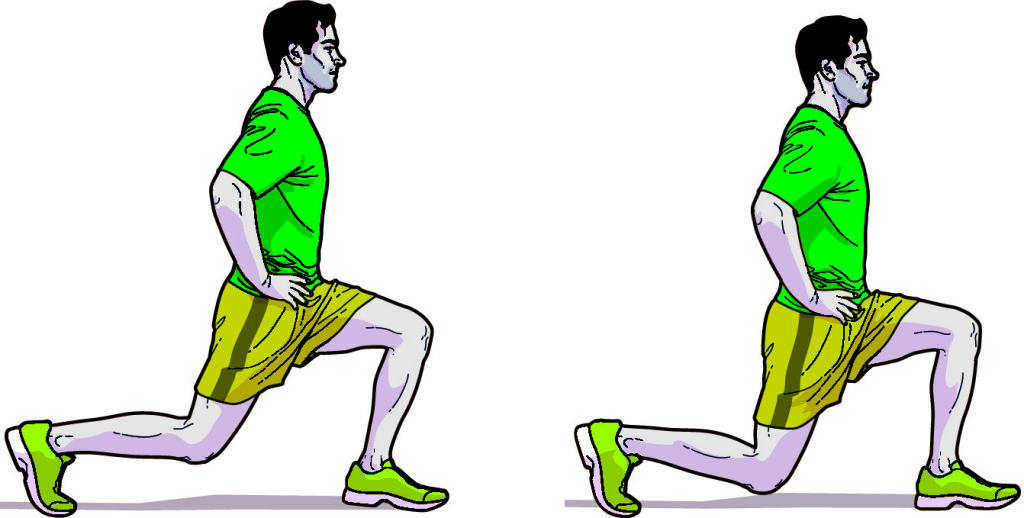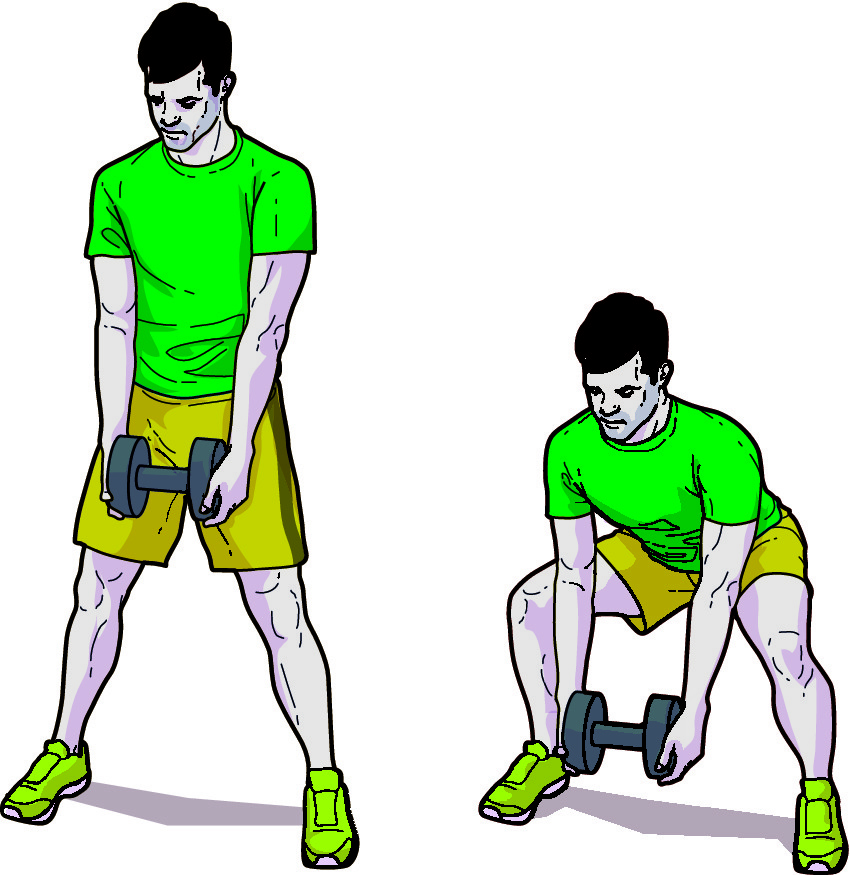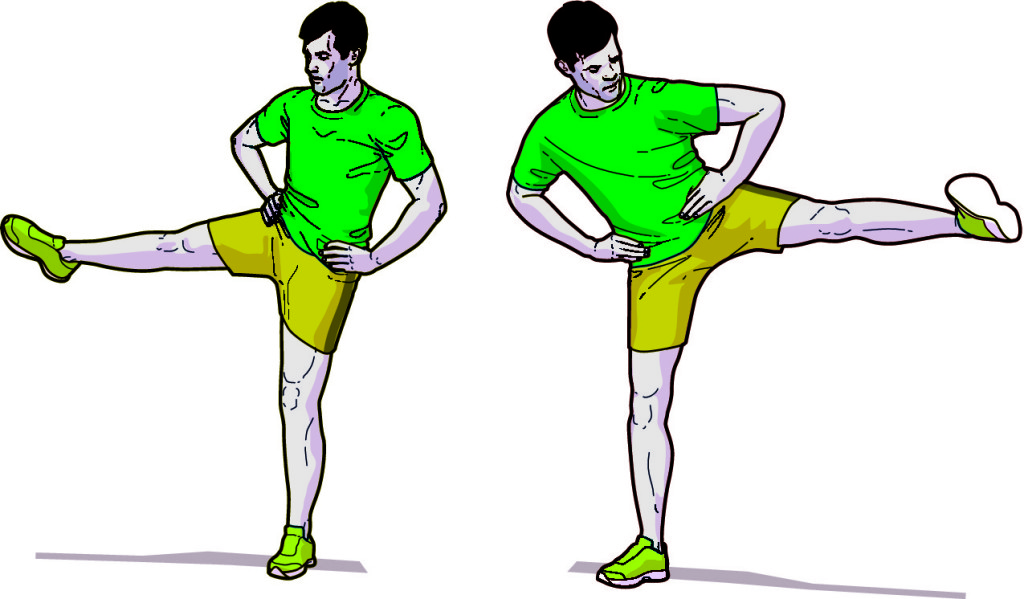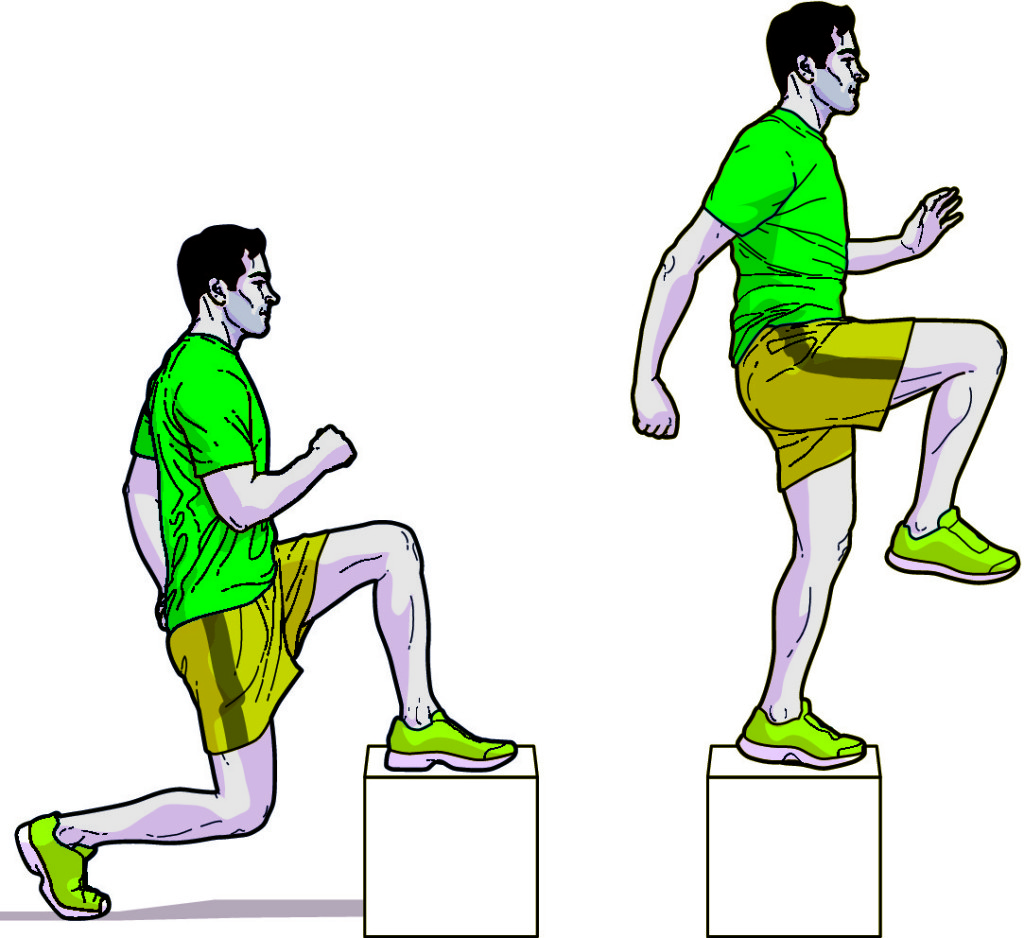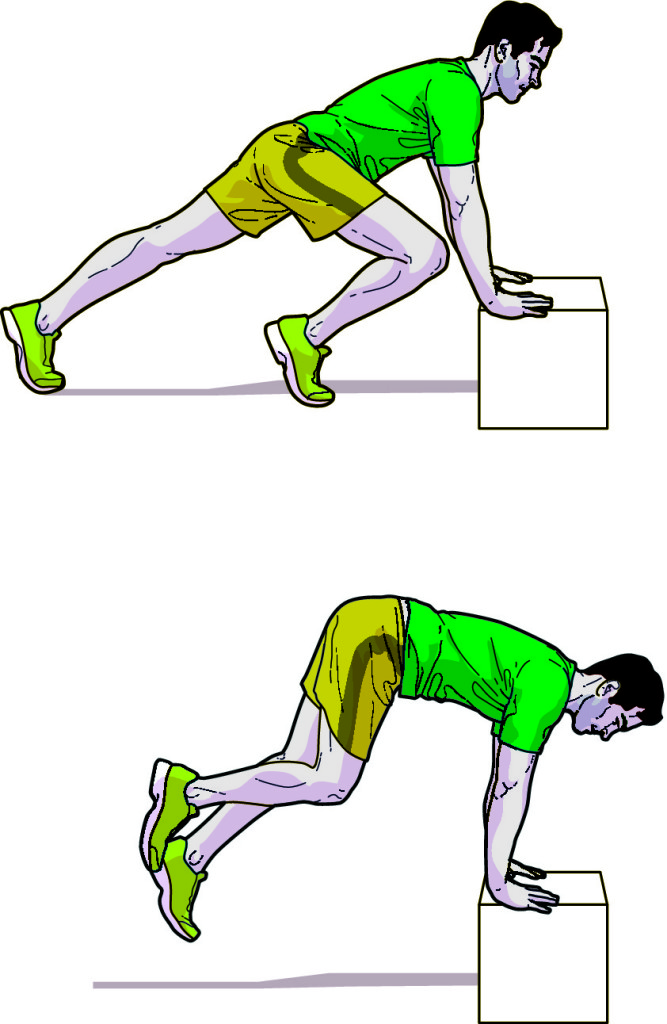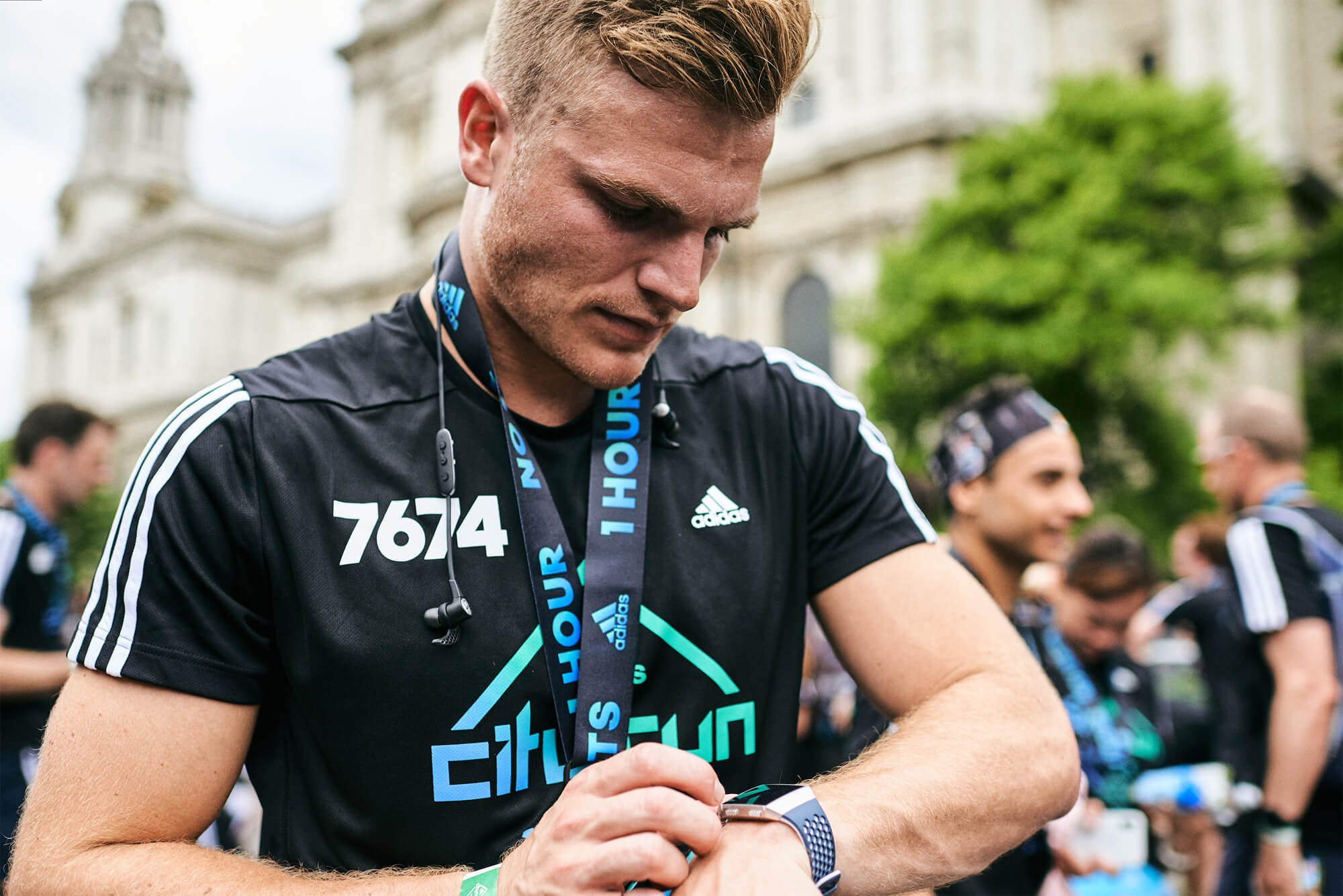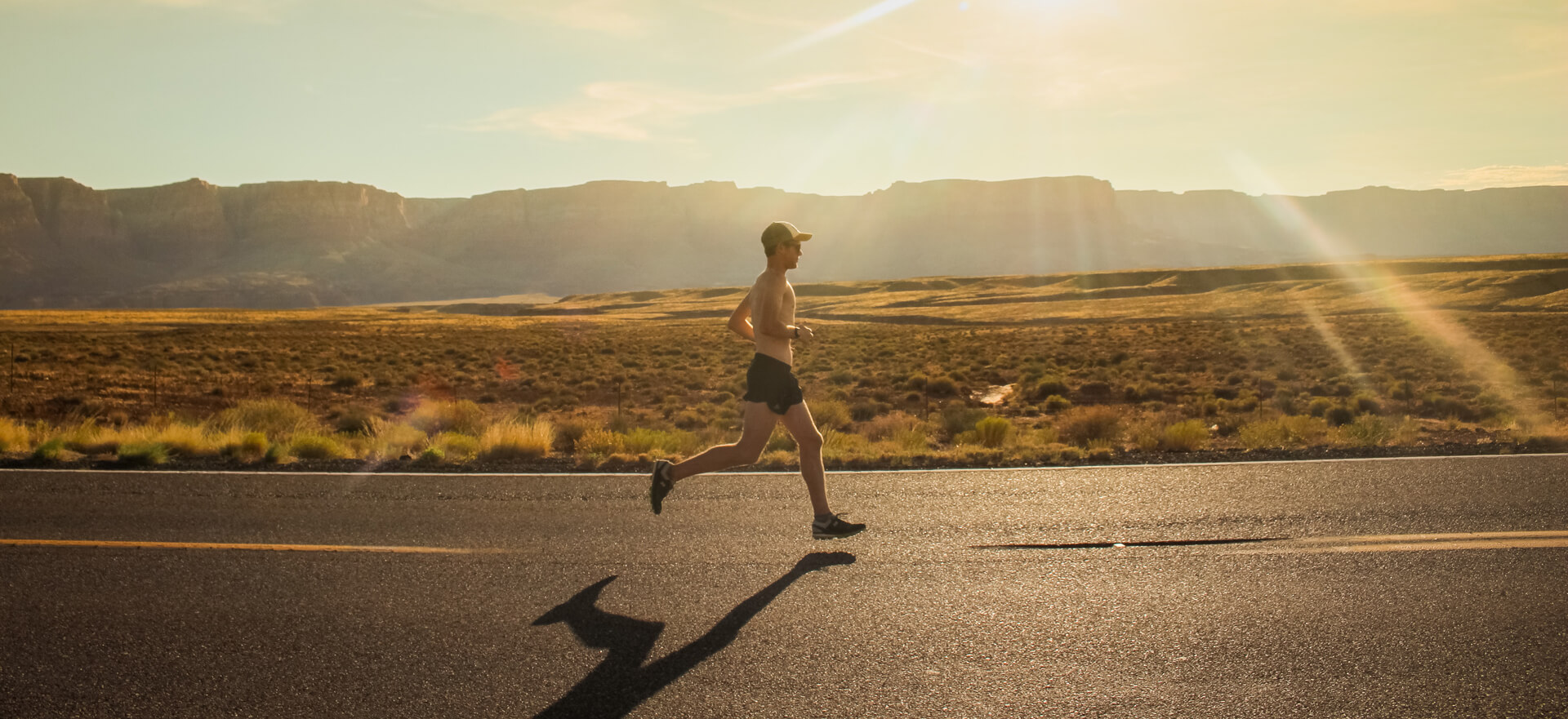Sets, reps and frequency
Do as many repetitions as possible in one minute of all eight exercises. Rest for two minutes. Repeat three times. Total time: 30 minutes.
Exercise 1: Straight-arm crunches
Muscles: Abdominals (rectus abdominus).
Why do it?
Running requires good core strength. Build up strength before you increase your mileage.
Technique:
- Lie with you back on the floor and extend your arms above your head
- Crunch your head, shoulders and arms off the floor
- Keep your arms next to your ears
- Slowly lower with control
Safety tip:
Keep your stomach muscles tight and don’t let your lower back arch off the floor.
Exercise 2: Pulsing lunges
Muscles: Front thigh (quadriceps).
Why do it?
The top and bottom part of your muscles are weaker than the middle part. By only training a small part of the range of motion you can increase the strength of your thighs.
Technique:
- Stand with your right leg in front of your left
- Bend your knees lower until your left knee touches the floor. This is the starting position
- Lift your left knee two to three inches off the floor
- Slowly lower down back to the floor
- Complete one set before changing over
Safety tip:
Keep your upper body up right don’t lean forward.
Exercise 3: Weighted wide squats
Muscles: Front thighs, bottom (quadriceps, glutes).
Why do it?
The stronger your thighs are the more power you can generate. Thus the longer it will take for your legs to fatigue.
Technique:
- Stand with your feet slightly wider than hip width apart with your feet turned out to a 45˚ angle
- Hold a weight in each hand
- Bend your knees to perform a squat
- Only lower until your thighs are parallel with the floor
- Return to the starting position
Safety tip:
Keep your upper body upright. Don’t lean forward.
Exercise 4: Straight-leg pendulum squats
Muscles: Front and outer thighs, glutes (quadriceps,abductors, glutes).
Why do it?
To be a good runner, all your muscles need to work together as a unit. This exercise helps with leg strength and glute activation.
Technique:
- Stand with your legs close together
- Bend your knees and perform a squat
- Only lower as much as you feel comfortable
- Stand up and swing your right leg sideways
- Keep your leg straight
- Replace your foot and repeat the squat with a side leg lift with your left leg
- Alternate between right and left
Safety tip:
Keep your stomach muscles tight and squeeze your glutes to aid your balance.
Exercise 5: Step-up lunges
Muscles: Front thighs, hip flexors, bottom (quadriceps, psoas muscles, glutes).
Why do it?
Strong thighs will give you more strength to help you run uphill and downhill.
Technique:
- Place your right leg on a step and keep your left leg on the floor
- Bend your knees and lower your left knee towards the floor
- Push off with your left leg to a single leg stance on the step
- Return your left leg to the floor and bend your knee to perform a lunge
Safety tip:
Only lower as much as you feel comfortable with. The higher the bench, the harder the exercise.
Exercise 6: Bent-over box jumps
Muscles: Core muscles, shoulders, arms, hip flexors (rectus abdominus, transversus abdominus, erector spinae, deltoids, biceps, psoas muscles) and cardiovascular fitness.
Why do it?
As you fatigue, your technique will deteriorate. Thus the more endurance you build up outside of running, the better your muscle will cope with the training.
Technique:
- Place your hands on the edge of a bench or step
- Pike your bottom up to the ceiling
- Jump both your legs forward until your feet are next to your hands
- Jump back while keeping your hands in the same position
- Keep alternating
Safety tip:
Don’t do this exercise if you have high blood pressure.

